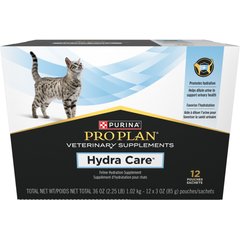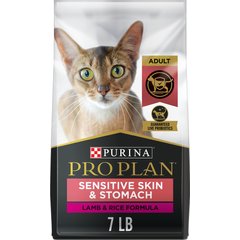Lung Fungal Infections in Cats
What Is a Lung Fungal Infection in Cats?
Fungus includes any of a group of organisms that produce spores and feed on organic matter, including molds, yeast, mushrooms, and toadstools. When spores of a fungal organism invade the lungs, a pulmonary infection can develop.
Cats become infected by breathing in spores floating in the air. The spores typically enter through the nose and make their way to the lungs, eventually growing into a yeast form. The presence of the fungal organism in the lungs triggers the body’s defenses to form lesions in the lungs. This leads to symptoms such as coughing, rapid and labored breathing, fever, and discomfort.
Fungal infections in cats are rare, but they can be fatal if not treated.
Types of Lung Fungal Infections in Cats
The four most common lung fungal infections in cats are:
Blastomycosis:
-
Caused by a fungus known as Blastomyces dermatitidis
-
It is most common in the river basins of Mississippi, Missouri, Tennessee, and Ohio, but is also found around the Great Lakes and St. Lawrence Seaway.
-
The fungus is native to Africa, India, Europe, Central America, and a few Canadian provinces.
-
Coughing and difficulty breathing are the most common symptoms.
Coccidioidomycosis:
-
Caused by the Coccidioides fungal species
-
This type of fungus prefers arid and semi-arid environments of the US Southwest, Mexico, and Central and South America.
-
Coccidioidomycosis has many symptoms, ranging from being asymptomatic (no visible symptoms) to severe symptoms, such as trouble breathing.
Cryptococcosis:
-
A fungal infection caused by Cryptococcus neoformans or Cryptococcus gattii
-
C. neoformans is found worldwide, while C. gattii is native to Australia, New Zealand, Canada, the Pacific Northwest, and Central and South America.
-
Cats acquire the fungus by inhaling the spores from the soil, decayed wood, or bird guano, especially from pigeons.
-
Upper respiratory symptoms are most common, such as:
-
Sneezing
-
Hard swelling over the bridge of the nose
-
Polyps in the nasal passages
-
Nasal discharge
-
Difficulty breathing
-
-
Lower respiratory disease is less common, but if the fungus infects the lungs, cats will have coughing as well as rapid and labored breathing.
Histoplasmosis:
-
Caused by Histoplasma capsulatum
-
This fungus is a common inhabitant of soil that contains fecal matter from birds and bats. It can be found globally, and in the United States it is predominantly found along the Mississippi and Ohio River valleys.
-
The spores spread primarily to the lungs, as well as to the lymph nodes in the chest.
Cats that live or spend time outdoors are more at risk for acquiring a lung fungal infection.
According to some research, the Havana Brown, Siamese, and Abyssinian breeds are believed to be more prone to blastomycosis, while Siamese, Himalayan, Birman, and Ragdoll cats are prone to cryptococcosis. Persian cats have been reported to have a higher incidence of histoplasmosis.
However, it is not clear whether any particular breed is at higher risk of contracting a fungal lung infection.
Vet Recommended Health Support
- Feliway Optimum Enhanced Calming 30 Day Diffuser for Cats$29.99Chewy Price
- Purina Pro Plan Veterinary Diets FortiFlora Powder Probiotic Digestive Supplement for Cats, 30 count$30.99Chewy Price
- Purina Pro Plan Veterinary Diets Hydra Care Liver Flavored Liquid Supplement for Cats, 3-oz pouch, case of 12$14.99Chewy Price
- Purina Pro Plan Adult Sensitive Skin & Stomach Lamb & Rice Formula Dry Cat Food, 7-lb bag$28.08Chewy Price
Symptoms of Lung Fungal Infections in Cats
Fungal infections have a wide range of symptoms, including:
-
Coughing
-
Difficulty breathing
-
Increased respiratory rate
-
Discomfort
-
Decreased appetite
-
Lethargy
-
Fever
Causes of Lung Fungal Infections in Cats
The environment plays an important role as to where certain fungi flourish. Blastomycosis fungi prefer areas where there is natural water and acidic soil that is sandy and moist. Cryptococcosis and histoplasmosis fungi grow best in guano or decaying wood. Coccidioidomycosis fungi grow best in arid and semi-arid areas after a dust storm.
Once these fungi establish an area to grow, they release spores into the air that a cat may breathe in. These spores then invade the lungs and other areas of the cat's body.
How Veterinarians Diagnose Lung Fungal Infections in Cats
There are several diagnostic tests that can be done to determine if a cat has a lung fungal infection. A few of the options:
- Cytology: A veterinarian gathers tissue samples from a cat, which will then be analyzed with a stain that highlights the fungal organism. Urine, nasal swabs, cerebral spinal fluid (CSF), or fluid obtained from the lungs can also be examined.
- Radiography: While x-rays cannot provide a definite diagnosis, they are helpful in determining if a fungal infection is possible, leading to further testing. If a fungal infection is present, the lungs may contain nodules and have a "snowstorm" appearance or have other various abnormal lung patterns.
- Antigen and antibody tests: These tests are very sensitive and highly specific, as they test for the antigen or antibody levels for the specific fungus in specimens. False positive and negative test results may occur, so the results of these tests are often interpreted with other diagnostic tests to reach a definitive diagnosis.
- Fungal culture: Using urine, CSF, joint fluid, tissue, or fine needle aspirates, a culture can grow the fungus so it can be examined. Fungal cultures are not done to test for histoplasmosis, blastomycosis, or coccidioidomycosis because these fungal organisms would be harmful to laboratory workers.
- Polymerase chain reaction (PCR) assay: This test can detect and identify a fungus in a deep pharyngeal or nasal swab, fluid from the lungs or trachea, aspirate, or biopsy of infected tissue. It takes one to four days to obtain test results.
- Histopathology: Biopsy samples from an infected tissue or organ or necropsy specimens can be sectioned and stained to scan microscopically for the presence of fungi.
Treatment of Lung Fungal Infections in Cats
Oral anti-fungal medication is often prescribed to treat lung fungal infections in cats. The type of medication used and the length of treatment varies, based on the type and severity of the infection. A lung fungal infection usually requires several months of treatment. The following anti-fungal medications are commonly prescribed for treatment of lung fungal infections in cats:
- Itraconazole: This oral anti-fungal medication is the preferred treatment for histoplasmosis.
- Fluconazole: This oral anti-fungal medication is often the treatment of choice for cryptococcosis, blastomycosis, and coccidioidomycosis.
- Ketoconazole: This oral anti-fungal medication is less effective compared to itraconazole or fluconazole and can be toxic to the liver. This medication is typically used if other treatments are too costly.
- Amphotericin B (AMB): This medication is often prescribed when a cat has a severe fungal infection in the lungs and other areas of the body. Amphotericin B is given as an injection, usually 3 days a week for 3-4 weeks. It can be the sole therapy or given along with an oral anti-fungal medication. Amphotericin B can cause toxicity to the kidneys, so cats on this medication should have bloodwork and a urinalysis test done periodically to monitor their kidney function
Recovery and Management of Lung Fungal Infections in Cats
Recovery time varies, based on the type of lung fungal infection and severity of the infection. The length of treatment for any of the above anti-fungal medications is based on antigen titers (tests). When the titer reaches zero, treatment is discontinued. Titers are usually conducted every 3-6 months to check for a relapse of infection. If the titer is unchanged after 2 months of treatment, then a different treatment plan is prescribed. If a cat has a relapse of infection, they are treated again.
The best way to reduce risk for infection is to keep cats strictly indoors, reducing the chance to breathe in harmful fungal spores. Indoor cats are less likely to acquire lung fungal infections but are still at risk. Indoor cats should be kept away from house plants, as the soil in the pots could contain fungus. Unfinished basements should also be off limits to cats because they commonly have dirt floors that may contain fungi.
Lung Fungal Infections in Cats FAQs
How do you treat a fungal lung infection in cats?
Cats are given oral and/or injectable anti-fungal medication over several months for treatment. Recurrence of infection can occur, so monitoring titer levels after treatment is also important.
How do cats get fungus in their lungs?
Cats breathe in fungal spores from the air. Once the spores enter the nasal passages, they can then spread to the lungs and cause infection.
Can cats recover from fungal infection?
Yes, cats can fully recover from fungal infections. However, prognosis depends on the type of fungus and how quickly it is diagnosed and treated. If the infection is severe and affects multiple organs, not just the lungs, then prognosis is guarded.
How long do cats live with histoplasmosis?
Based on two studies involving 52 cats with histoplasmosis, about half lived through the end of each study. The median survival time between the two studies varied. In one study, the median survival time was 1.5 years and in the other study the median survival time was about 2 years.
References
-
Morgan, R. Veterinary Partner. Histoplasmosis (Zoonotic) Feline. September 2019.
-
Morgan, R. Veterinary Partner. Blastomycosis (Feline). June 2019.
-
Veterinary Partner. Cryptococcosis (Zoonotic) Feline.
-
Skyes, J. ACVIM. Epidemiology of Cryptococcus Infections.
-
Aulakh H, Aulakh K, Troy G. “Feline histoplasmosis: A Retrospective Study of 22 Cases (1986-2009],” J Am Anim Hosp Assoc. 48(3), 2012, pp. 182–187.
-
Reinhart J, KuKanich K, Jackson T, et al. “Feline histoplasmosis: fluconazole therapy and identification of potential sources of Histoplasma species exposure,” J Feline Med Surg. 14(12), 2012, pp. 841–848.
-
Wüthrich M, Krajaejun T, Shearn-Bochsler V, et al: “Safety, tolerability, and immunogenicity of a recombinant, genetically engineered, live-attenuated vaccine against canine blastomycosis,”. Clin Vaccine Immunol. 18(5), 2011, pp. 783–389.
-
Marin J, Savage M, Adley B, et al: “What Is Your Diagnosis? Laryngeal blastomycosis in a dog,” J Am Vet Med Assoc. 254(1), 2019, pp. 61–64.
Featured Image: iStock.com/DjelicS




